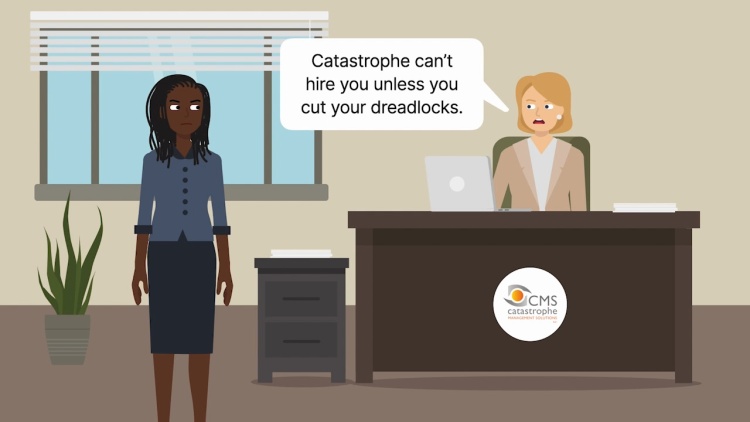Equal Employment Opportunity Commission v. Catastrophe Management Solutions
United States Court of Appeals for the Eleventh Circuit
852 F.3d 1018 (2016)
- Written by Arlyn Katen, JD
Facts
Chastity Jones, a Black woman, dressed in a business suit and wore her hair in short dreadlocks when she attended an in-person interview for a telephone-based customer-service position at Catastrophe Management Solutions (Catastrophe) (defendant). Catastrophe hired Jones on the spot with a group of other applicants. After Catastrophe’s human-resources manager, Jeannie Wilson, addressed the new hires about onboarding, Wilson and Jones met privately to discuss a scheduling conflict, and at the end of that conversation, Wilson told Jones that Catastrophe could not hire her if her hair was in dreadlocks, claiming that “they tend to get messy, although I’m not saying yours are, but you know what I’m talking about.” Jones said that she would not cut her dreadlocks, and Wilson asked Jones to return her onboarding paperwork. The Equal Employment Opportunity Commission (EEOC) (plaintiff) sued Catastrophe on Jones’s behalf, arguing that refusing to hire a Black employee with dreadlocks is racial discrimination that violates Title VII of the Civil Rights Act of 1964. The district court dismissed the EEOC’s complaint, finding that a hairstyle is a mutable (or changeable) characteristic and Title VII prohibits only discrimination based on immutable characteristics. The EEOC appealed, arguing that race is a social construct with no biological definition, and race is not limited to immutable physical characteristics. The EEOC did not claim that dreadlocks are an immutable trait of Black people, but rather that dreadlocks are a natural outgrowth of Black hair texture, which is an immutable trait. The EEOC also argued that dreadlocks can symbolize racial pride and that Black people who wear dreadlocks are often stereotyped as radicals and troublemakers who will not assimilate into corporate and professional norms.
Rule of Law
Issue
Holding and Reasoning (Jordan, J.)
What to do next…
Here's why 899,000 law students have relied on our case briefs:
- Written by law professors and practitioners, not other law students. 47,000 briefs, keyed to 994 casebooks. Top-notch customer support.
- The right amount of information, includes the facts, issues, rule of law, holding and reasoning, and any concurrences and dissents.
- Access in your classes, works on your mobile and tablet. Massive library of related video lessons and high quality multiple-choice questions.
- Easy to use, uniform format for every case brief. Written in plain English, not in legalese. Our briefs summarize and simplify; they don’t just repeat the court’s language.





